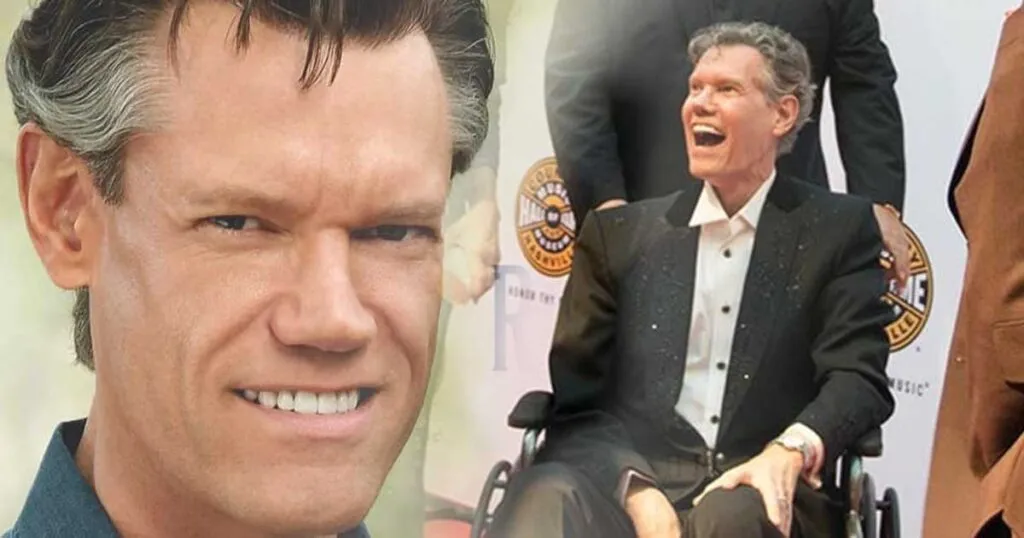
A man’s quiet resolve against temptation echoes louder than the pulse of desire.
From its humble July 1985 debut—stalled at No. 67 on Billboard’s Hot Country Songs—to its triumphant reissue in April 1986 when it soared to Randy Travis’s first-ever No. 1 hit in both the U.S. and Canada, “On the Other Hand” became the emotional launch pad for Travis’s 1986 debut album, Storms of Life, and marked the arrival of an artist committed to the simple power of country music tradition.
In that opening moment, the essence of the song looms: a man caught between two worlds—passionate impulse on one hand, and lifelong loyalty on the other.
Long before Randy Travis lifted it with his resonant baritone, Paul Overstreet and Don Schlitz conceived the song in a songwriting session struggling with another idea. According to Overstreet, “but on the other hand,” sparked the rest—“…there’s a golden band”—and they finished the song in a creative flash. Offered to producer Kyle Lehning, it was originally earmarked for Dan Seals, but Lehning sensed that it perfectly suited the fresh, austere presence of Travis—then new to Warner Bros. Nashville. That January 1985 Columbia session that yielded “On the Other Hand” also produced tracks like “Carrying Fire” and “Reasons I Cheat,” all co‑produced by Lehning and Keith Stegall.
Musically, the song is unadorned—a neotraditional ballad in F major with an “easy country swing” tempo, spotlighting acoustic guitar, steel, and restrained drums, virtually untouched by the synth-slicked influences dominating early-’80s country. Travis’s deliberate, spare delivery let the lyrics breathe and the listener feel each choice.
Lyrically—a narrative study in integrity—the narrator counts reasons to stay with a past flame: the warmth, affection, passion. But each thought is met by the counterbalance of a wedding band: a “golden band” that isn’t just jewelry, but a covenant. The emotional gravity comes not from rejection, but from wisdom and self-respect: desire bows before devotion. This internal calculus gives the song its timeless weight.
Though the song stumbled on first release, the cosmic rhythm of classic country and Travis’s growing buzz meant that, when Warner reissued it in April 1986, country radio and listeners were ready. It rocketed to No. 1 by July 26, 1986—ushering Travis into award-season glory, including CMA Song of the Year and solidifying Storms of Life as the flagship for the 1986 “Class of ’86” alongside Dwight Yoakam and Steve Earle.
Travis’s voice—mid‑Atlantic baritone, unforced and sincere—became the ideal vessel for the song’s moral tension. Critics often compared him to Lefty Frizzell, Merle Haggard, George Jones—yet Travis delivered a modern vocabulary of fidelity that struck 1986 listeners as something both deeply familiar and startlingly new. That moment—that one single—changed what Nashville thought could be successful.
In the broader cultural arc, “On the Other Hand” stands as a pivotal cornerstone in the neotraditional country movement—when artists burned away the gloss in favor of plainspoken truth. Later hits like “Forever and Ever, Amen” and “Diggin’ Up Bones” followed the template, but it was this first hit—the unshowy confrontation of temptation, the lens turned inward on marriage, commitment, longing—that introduced Travis as country’s new moral compass: unafraid to feel, unafraid to stay.
As vintage as an old radio show, and as fresh as a live performance on a summer night, “On the Other Hand” remains a testament to the power of quiet conviction: a personal reckoning set to music that begs you to listen longer, feel deeper, and hold onto the values that endure.